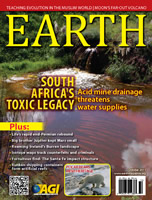 On the battlefields of the Somme, history and geology meld. Beneath the chalky earth, men carved messages, memorials and poems into the walls of tunnels that were dug almost a century ago during the First World War. Explosions in the tunnels buried countless men and reshaped the surface, where grass and trees now soften the cratered landscape. Many of the soldiers’ bodies — and their words — remain buried.
On the battlefields of the Somme, history and geology meld. Beneath the chalky earth, men carved messages, memorials and poems into the walls of tunnels that were dug almost a century ago during the First World War. Explosions in the tunnels buried countless men and reshaped the surface, where grass and trees now soften the cratered landscape. Many of the soldiers’ bodies — and their words — remain buried.
Now the owners of one undisturbed site, called La Boisselle, in France, are opening it to a team of researchers who will use geophysical techniques to help tell the soldiers’ stories. Before beginning an archaeological excavation, they will use laser survey techniques, magnetometry and perhaps ground penetrating radar to survey the trenches and tunnels at this private farm, where four levels of tunnels extend as deep as the water table, about 30 meters below the surface.
“What we have in tunnel warfare is a very well-documented narrative,” says independent historian Peter Barton, who helped arrange access to the site. He and colleagues have pieced together the names and fates of many soldiers on the British and French side, but now they want to understand how the tunnelers dealt with the region’s limestone geology.
After the first few months of World War I in Belgium and France, both sides dug in. Then they began digging toward and under each other to set off explosives. “Men aboveground were absolutely petrified of [underground explosions],” says geologist Peter Doyle, an independent consultant and visiting professor at University College London in England who has studied trench and tunneling warfare in Flanders, Belgium.
The ground in Flanders is made of Paleogene clay, which is similar to clay horizons beneath London. Many British engineers had experience building tunnels through that kind of clay for sewers and the London underground railway, Doyle says. So the Army brought them in to manage their battlefront tunnels. They imported techniques such as “clay kicking,” in which a digger lies on his back and kicks at the layer above him, knocking loose the soft material in large clumps, he says.
The Somme, however, is different. The subsurface is primarily composed of Cretaceous-aged white limestone, or chalk. Such hard stone would have required the use of picks to dig out tunnels. That, in turn, would have required new technologies for both suppressing and detecting underground sounds, Doyle says.
The British Army also brought in miners to help dig out these tunnels, according to military records, but the miners had to deploy other techniques to avoid detection by the enemy. They used muffled picks, padded through the tunnels in their socks, and sometimes tried to fool the other side by picking at decoy tunnels, Doyle says. But “it was a highly secret war,” Barton says. “We don’t know the places where they stopped picking and began using their bayonets, for fear of being heard.” Records do show that both sides used geophones to listen for signs of enemy digging and to reassure nervous troops that all was quiet under opposing lines.
Because the story of how the tunnels were built and used is incomplete, Barton and his colleagues are resorting to modern techniques unavailable to the original miners. For example, battlefield archaeologist Ian Banks of the University of Glasgow in Scotland plans to conduct a resistivity and magnetometry survey of the tunnels. The techniques should help researchers pick out trenches and barbed wire from background noise. At least some of that background noise could prove dangerous: Plenty of unexploded ordnance remains buried. Before descending into the tunnels, the researchers will ask an explosive-ordnance removal company to locate any hazardous unexploded ordnance, Barton says.
Additional surveys could include the use of airborne lasers to create detailed topographical maps of the surface, infrared satellite image analysis to search for signs of disturbed earth, and ground penetrating radar to locate voids such as intact tunnels. “A lot of the tunnels will be intact,” Banks says, thanks to the limestone. The team will also carry lasers inside the tunnels to create a three-dimensional digital model or map, a technique also used by some cavers, of the tunnels, which could be 30 meters deep and total 4 to 6 kilometers long altogether, Barton says. The digital models could be displayed and manipulated in museums or online in the future.
See also the story as it appeared in EARTH Magazine: [pdf]
Update 31/10/11: Jeremy Banning sent me a link to their report on the October excavation, with photos, here.
One thought on “Modern Tools Reveal World War I Tunneling Tricks”
Comments are closed.